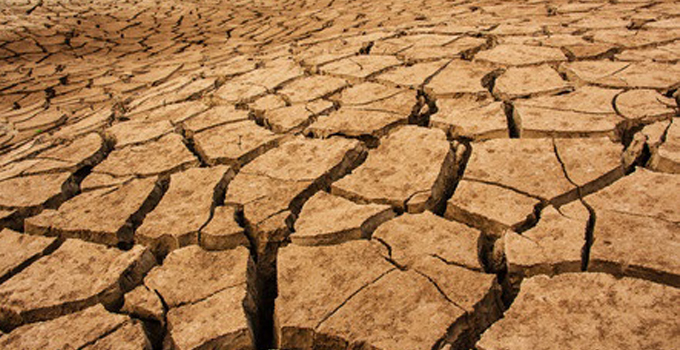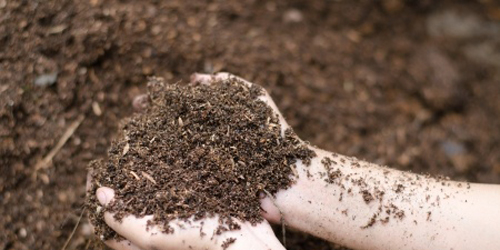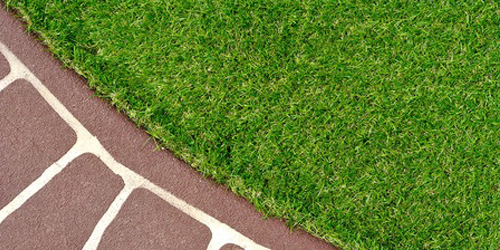
How to Care for Your Lawn During a Drought: The Summer Survival Guide
Posted June 4, 2015 by Jacks Small EnginesThe sky is blue, the air is warm……and it hasn’t rained in weeks. Summer has its perks, but drought is a big deal, especially for your lawn!
No need to worry though, if the forecast is still calling for dry sunny days, there are plenty of ways you can keep your lawn healthy through the dry spell!
First thing’s first, is your lawn really dead?

You may see the brown grass tips and instantly think your lawn is dead. But, did you know, your lawn can go dormant! The grass may appear dead, but you can check the base of the blades, if they are still green and the roots are a sort of off white color, you grass is still healthy and will start to come back to life after the next rain storm! The bad news about your lawn being dormant is that if there is no rain in the forecast, your lawn may not stay dormant and may end up dying, luckily, if you have the time and patience you can keep your lawn alive so it will come back and be full and vibrant again!
Watering your lawn during a drought (if you are allowed!)
Sometimes during a drought, your township may put a restriction on water use.
However, this is not always the case. If there is not immediately a restriction on water use, but you feel like one could happen, you are better off not watering your lawn. Watering a dormant lawn once or twice may be more harmful than not watering it at all.
If you can water your lawn, and know you will be able to continue to do so, watering it once or twice a week is sufficient, as long as there is ½” to ¾” applied each at each watering. That is the maximum amount of water you should use, if you over water your lawn you may cause runoff, and that is a huge waste of water, especially during a drought!
If you are someone who uses an automatic watering system, you should be using automatic irrigation as opposed to a sprinkler. You may be wondering why, well, during a drought, the last thing that needs watered is the sidewalks and pavement, which is what a sprinkler will do! An automatic irrigation system will only water the grass, which leads to no wasted water!
When you water your lawn, there is a good chance that some of that water could evaporate. The best way to ensure that almost all of your water goes to the grass is to water very late at night, or very early in the morning. Usually after the sun sets completely, and before it rises.
Can’t water? Here’s what you can do!
In the chance that you can’t water your lawn as often as you like, or even at all, here are some things that you can do to help keep your lawn alive and healthy without having to water!
One of the biggest things you can do is STAY OFF YOUR LAWN! Avoid letting your children or pets run on it, don’t drive over it, basically, don’t do anything that could compress the soil. Compressed soil does not absorb as much moisture!
Aerating your lawn is another thing you can do to help deliver moisture directly to the root system. Aerating is when you either poke holes in your lawn or remove plugs of dirt and soil, both create holes that help lessen soil compaction and helps moisture get right down to the roots of the grass to help promote growth.
The next thing you can do is to de-thatch your lawn! You may be wondering exactly what thatch is, well, it is a layer of brown matted grass, don’t mistake it for left behind grass clippings, because that’s not what it is! Leaving some grass clippings on your lawn is good, as you will see in the next paragraph, but having too much thatch can prevent moisture from getting to the root system. If you notice more than ½” of thatch on your lawn, you should de-thatch it.
Something you may not think to do is to keep mowing your lawn! Be sure to keep the blades sharp so they do not tear the tips of the grass blades. If a blade is dull it may tear the blade and cause the tip to dry up and turn brown and cause stress to the grass blades. Your grass may not grow much during a drought, but it will still grow some. If it is time for your lawn to be mowed, set your mower to the highest cutting level and then mow. This will keep your grass looking nice even if it isn’t getting much water.
It’s all in the soil…

The composition and quality of your soil may affect how much moisture it retains and how easily it can transfer nutrients into the grass. There are different make ups of soil such as sandy, clay, and loamy soil. Sandy soil does not contain as many nutrients as other soils and does not retain as much water whereas a loamy soil does hold more nutrients and water. If you have a sandy soil the grass is more likely to dry out during a drought. However, there are things you can do to help increase the quality of your soil, such as top dressing.
Top Dressing
Top dressing is adding compost or other fertilizer to the top layer of your lawn. Doing this in conjunction with aerating your lawn can vastly increase your soil quality and the amount of moisture it can hold, which will be extremely helpful during a drought. It can also help reduce the level of compaction, which as we know, affects the soil’s ability to hold moisture! There are many more advantages to top dressing your lawn, but these are the primary ones that will help aid you in the case of a drought.
You may be thinking, hey this sounds great, but how do I do it?
Fortunately, it’s pretty easy, but it is labor intensive and can get expensive depending on how big your lawn is. Most top dressing is compost mixed with either sand or soil, to keep costs a little more affordable. If you have a sandy or loamy soil, do not get a top dressing that has finer sand in it. You want to get a top dressing that has the coarsest sand in it.
When you top dress your lawn, you want to fist de-thatch and aerate for best results. All you need to do then is spread the top dressing on your lawn, only about ¼” to ½” deep, and then brush over it lightly with the back side of a rake.
This really doesn’t need to be done too often, so once during the year should be fine, especially in the time of drought when it will help add moisture to the root systems of your grass. Continue watering as you have been throughout the drought, and if you can’t water, it will be okay, just resume watering as soon as you are allowed.
Not only will top dressing help with moisture, it will help reduce the stress that is being placed on your lawn, and it will help control the thatch.
Live in an Area where Drought is Extremely Common?

If you live in an area where your yard experiences drought more often than not, you have options if you do not want to maintain your lawn as stated above, or, if you don’t really have a lawn, and would like to have something beautiful surrounding your house, without having to worry so much about water.
You may see people with fake plants around their house, but have you ever looked at a perfect lawn in the middle of a dry town out west? Ever wonder how they got it that way? It could have been lots of hard work and a pretty penny, or it could have been artificial grass. Sound insane? I’m serious! It’s not only for sports fields!
There are many different options for artificial grass, and they only require minimal upkeep. Also, the length, type and many other options can be selected to make the sure the “grass” is the right fit for your area.
Another option is called xeriscaping. Xeriscaping is a form of landscaping that can greatly reduce, or completely eliminate the need for water from irrigation. This practice is most common in areas that are particularly drought prone. Usually, planting native and drought resistant plants is one of the best ways to go about xeriscaping, mulch is also very helpful around the plants to retain the moisture for them.
While xeriscaping is a great option, some of the downfalls are; reduced yard space, no room for activities, and the starting cost can be very high, as with any major lawn change. Also, one of the most commonly used type of plants for xeriscaping in hot climates are cacti. Cacti have thorns which aren’t ideal for yards if you have young children or pets. While there are other plants that can be used that do not have thorns, cacti are some of the easiest to keep alive in drought stricken areas.
Remember, as with any major lawn change, you need to check your community’s guidelines especially if you live in an area with an HOA. While it may look nicer, it may not be approved!
There are tons of ways that you can help your lawn survive the summer drought! Just be sure to take good care of it when you can, so that it comes back after the drought lush, green and full of life!
